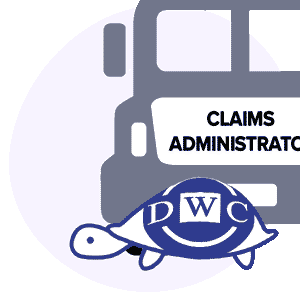Sedgwick Must Be Fined: An Open Letter to the CA DWC

To: California Division of Workers’ Compensation (DWC)
From: daisyBill
Subject: 102,498 Sedgwick Audit Complaints
We hope this message finds you well. We write with an urgent call to action on behalf of California providers who treat injured workers.
Today, daisyBill submitted an additional 23,180 Audit Complaints to the DWC detailing how Third-Party Administrator (TPA) Sedgwick Claims Management demonstrably, repeatedly, and consistently violates straightforward e-billing rules — DWC rules — designed to facilitate more efficient care of injured workers.
We have asked the DWC to provide specific instructions for requesting a DWC Target Audit of Sedgwick— and have been rebuffed with nothing more than the vague promise that the DWC is “working on resolving billing compliance issues with Sedgwick…”
Since June 2022, daisyBill has submitted a total of 102,498 Audit Complaints to the DWC to report Sedgwick’s non-compliance. The TPA’s continued and unabated non-compliance can mean only one of two things: either the DWC has yet to take action, or has yet to take effective action (data shows Sedgwick’s lack of compliance is increasing in 2023).
California Labor Code Section 129.5(a) empowers the DWC to impose administrative penalties of $100 for each instance of a TPA failing to “comply with any rule or regulation of the administrative director.” According to our arithmetic, Sedgwick should owe a total of $10,249,800 in penalties.
We submit the data below for your consideration and the consideration of the public. And we ask for clarification: Does the DWC enforce its own rules? And if it doesn’t currently, will it ever? If the answers are in the negative, then the DWC is nothing more than a feckless turtle, heedlessly ensconced in its shell while claims administrators flout critical regulations.
Sedgwick EDI Violations: A Brief History
Take a look, DWC. Below are data from hundreds of thousands of electronic bills daisyBill providers submitted to Sedgwick, for which the TPA failed to return an electronic Explanation of Review (e-EOR).
California workers’ compensation is already a paperwork nightmare for providers. To not return e-EORs is to subject practices to the painstaking, time-consuming, and unnecessary labor of posting bills the old-fashioned way. Most importantly, the DWC mandates e-EORs in response to e-bills.
These e-EORs automatically close the payment loop for providers, saving countless hours of manual work. Unfortunately for providers, Sedgwick doesn’t return e-EORs for anywhere between a fifth and a third of e-bills. This failure represents tens of thousands of e-bills for which the doctor either wasn’t paid, or was robbed of the practice resources necessary to post payment manually.
The data below irrefutably demonstrate Sedgwick’s continued, consistent defiance of the regulations.
Sedgwick |
2021 |
2022 |
2023 |
e-Bill Sent Total |
265,100 |
289,483 |
160,936 |
e-EOR Missing Total |
87,929 |
59,608 |
36,500 |
e-EOR Missing % |
33% |
21% |
23% |
Month |
2021 e-EOR Missing % |
2022 e-EOR Missing % |
2023 e-EOR Missing % |
Jan |
35% |
25% |
22% |
Feb |
40% |
23% |
23% |
Mar |
44% |
21% |
21% |
Apr |
33% |
21% |
22% |
May |
35% |
21% |
22% |
Jun |
33% |
21% |
25% |
Jul |
29% |
19% |
|
Aug |
30% |
19% |
|
Sep |
34% |
19% |
|
Oct |
36% |
19% |
|
Nov |
27% |
19% |
|
Dec |
25% |
20% |
The data above represent only daisyBill clients — how often does Sedgwick fail to return e-EORs for doctors without the software necessary to track this non-compliance?
No Penalties, No Shame, No Decency
Monetary consequences are automatic for providers who fail to submit bills or appeals compliantly: the claims administrator is simply not required to pay. Per California workers’ comp laws, a provider forfeits reimbursement if they do not timely or correctly submit a bill, a Second Review appeal, or an Independent Bill Review (IBR) request.
In stark contrast, Sedgwick seems to suffer no consequences for its repeated, years-long e-EOR non-compliance. The DWC has, to our knowledge, imposed no penalties, levied no fine, nor even issued the mildest reprimand. In a so-far-futile attempt to enlist the help of the DWC, daisyBill has filed thousands and thousands of Audit Complaints:
- 25,970 Audit Complaints for missing e-EORs filed on June 22, 2022
- 31,906 Audit Complaints for missing e-EORs filed on December 14, 2022
- 21,442 Audit Complaints for missing e-EORs filed on April 20, 2023
- 23,180 Audit Complaints for missing e-EORs filed on July 25, 2023
These Audit Complaints represent a total of 102,498 violations of the DWC’s e-EOR mandate — with no evidence that the DWC has rectified any of these violations in the last 13 months.
We even publicly appealed directly to Sedgwick, hoping that where the DWC has failed to spur compliance, a sense of shame or decency could do the trick. Spoiler alert: Sedgwick apparently has neither.
Target Audit Criteria: Missing in Action
On April 20 of this year, daisyBill contacted the DWC Audit and Enforcement Unit to request instructions for initiating a Target Audit against Sedgwick, the criteria for which are described in California Labor Code Section 129(b)(3), which states (emphasis and enumeration ours):
- A targeted profile audit review or a full compliance audit may be conducted at any time in accordance with target audit criteria adopted by the administrative director.
- The target audit criteria shall be based on information obtained from benefit notices, from information and assistance officers, and from other reliable sources providing factual information that indicates an insurer, self-insured employer, or third-party administrator is failing to meet its obligations under this division or Division 4 (commencing with Section 3200) or the regulations of the administrative director.
We’d like to think that hard, verifiable data from hundreds of thousands of e-bills constitutes “factual information” from a “reliable source.” And it sure as heck “indicates” that Sedgwick is “failing to meet its obligations” under the regulations. Moreover, Sedgwick has done so year after year, literally over a hundred thousand times.
Yet when daisyBill requested the “target audit criteria adopted by the administrative director,” the DWC failed to respond with any actionable information.
If there is no way to initiate the Target Audit process (or if the DWC refuses to share exactly how to initiate a Target Audit), how can Target Audits possibly deter non-compliance? Are Target Audits simply a hollow threat, offering nothing more than a veneer of accountability?
Whom Does the DWC Serve?
Providers, injured workers, and advocates like daisyBill look to the DWC for a partner in ensuring that injured workers receive proper medical care, and to enforce workers’ compensation laws and regulations. Instead, the DWC seems to allow claims administrators to advance their own priorities over those of providers and injured workers.
Meanwhile, providers are expected to act as an enforcement arm of the DWC, responsible for tracking payer non-compliance, reporting it, fighting appeals battles, and otherwise doing the state's job — except with none of the state’s (or the claims administrators’) power.
Providers are left begging claims administrators for correct payment through Second Review appeals, which claims administrators too often deny as “duplicate bills,” followed by begging the state for justice through IBR, which has become an ugly game of chicken. And when providers are actually paid, it’s often at Medicare rates or below.
Don’t even get us started on Medical Provider Networks (MPNs) and the DWC’s heartbreaking mismanagement thereof.
Worst of all, when a provider (or in this case, an e-billing vendor with mountains of data directly from providers) brings irrefutable evidence of flagrant non-compliance directly to the DWC’s door — on the proverbial silver platter — the DWC does nothing, while Sedgwick increases the rate of its violations with impunity.
Consider this our appeal.
The DWC is charged by the people of California with making sure injured workers are taken care of. The DWC is empowered to dictate exactly how that goal is accomplished, as a regulatory entity. Right now, too many injured workers are not taken care of adequately, largely because the likes of Sedgwick make it a nightmare for doctors to simply treat injured workers and be reimbursed properly.
Where is the DWC?
Sincerely,
daisyBill
Harness the power of daisyBill software, data, and expertise for faster, better workers’ comp billing. Reach out to learn exactly how we can help your practice.
CONTACT US
DaisyBill provides content as an insightful service to its readers and clients. It does not offer legal advice and cannot guarantee the accuracy or suitability of its content for a particular purpose.





